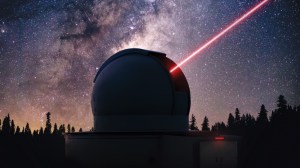While NASA is planning a human mission to the Moon in 2024, researchers on the ground are preparing the most precious cargo that will be aboard: the human body and mind. By studying the effects of isolation and confinement in ground-based analogs, scientists are learning how to counter the hazards of human spaceflight without leaving Earth.
The 19th Human Exploration Research Analog (HERA) analog mission “departed” on May 24 for a trip to Phobos, the larger of the two moons of Mars. HERA XIX, also known as C5M2 (Campaign 5, Mission 2), is the second of four planned missions in the mock spacecraft located at NASA’s Johnson Space Center (JSC) in Houston.
While on mission, the crew participates in several simulations that may be very similar to how a mission to the Moon would be conducted. They fly a simulated spacecraft to the surface of Phobos then do a virtual reality spacewalk. They also work with a simulated robotic arm.
“Some of this research is conducted to look at their levels of autonomy,” Human Research Program’s Flight Analogs Project Manager, Lisa Spence said. In a real mission, the crew will be very far from Earth which will cause communications delays. The crew must work together with only sporadic input from Mission Control. These HERA simulations help provide research data for autonomous conditions.
NASA’s Human Research Program requires the crews of all four C5 missions to conduct the same experiments, which enables researchers to identify patterns and variances in the research data. The C5 crewmembers will have less privacy in their crew quarters and in the hygiene module, and less “free volume” in which to work.
The HERA Mission Control Center is just outside of the mock spacecraft in Building 220 of JSC. The crew will be monitored while in mission for physiological and psychological effects of extended isolation and confinement, team dynamics, and conflict resolution.
Crewmembers for C5M2 are Barret Schlegelmilch of Kent, Washington; Christian Clark of Honolulu, Hawaii; Ana Mosquera of Washington, D.C.; and Julie Mason of Huntsville, Alabama. Banumathi Cole of Charlottesville, Virginia trained with the crew as a backup member. The crewmembers will live in the HERA spacecraft for 45 days without actually leaving JSC.
“It’s critically important we’re able to find suitable volunteers, people who mimic or emulate the type of people that we select for astronauts. That’s very important to us,” Spence said.
Campaign 5 is the second campaign to utilize 45-day missions. Longer mission length allows for more mission-like crew effects and more data points relevant to longer duration spaceflight missions. The next two Campaign 5 missions are scheduled as follows: Mission 3 will begin in August 2019 and Mission 4 will begin in January 2020.
Analog missions like HERA allow researchers to gather more data on more test subjects, within the confines of Earth. One goal of these missions is to look for possible safeguards from the hazards of life in space, and contribute to sustained human presence on the Moon.
The NASA HRP Test Subject Screening group is accepting resumes for healthy, non-smoking volunteers, ages 30 to 55 for future missions. Volunteers will be compensated and must pass a physical and psychological assessment to qualify. Volunteers wishing to become test subjects should go to this website to fill out a quick survey and find further instructions: https://herastudy.jsc.nasa.gov
For more information on NASA’s Human Research Program, visit: www.nasa.gov/hrp .
____
NASA’s Human Research Program, or HRP, pursues the best methods and technologies to support safe, productive human space travel. Through science conducted in laboratories, ground-based analogs, and the International Space Station, HRP scrutinizes how spaceflight affects human bodies and behaviors. Such research drives HRP’s quest to innovate ways that keep astronauts healthy and mission-ready as space travel expands to the Moon, Mars, and beyond.

































